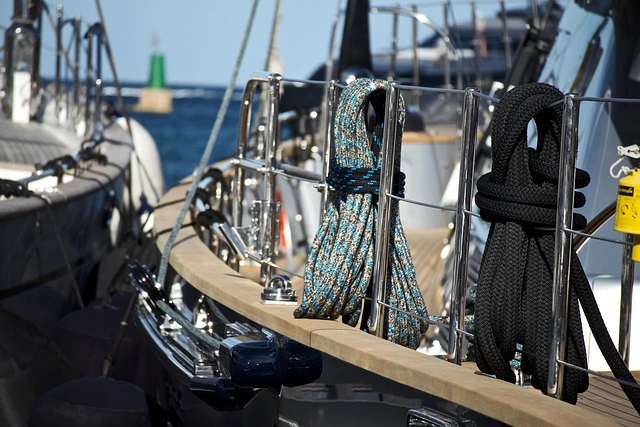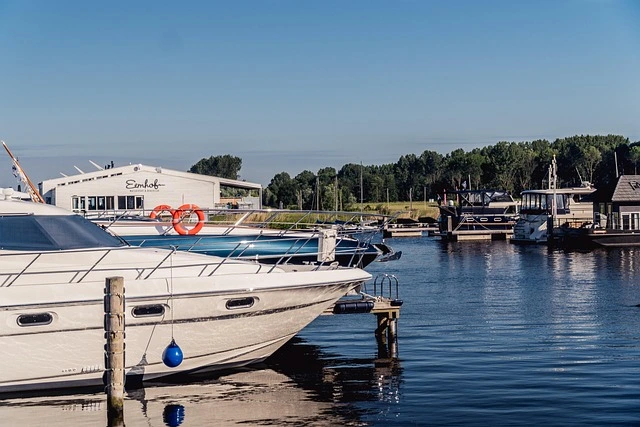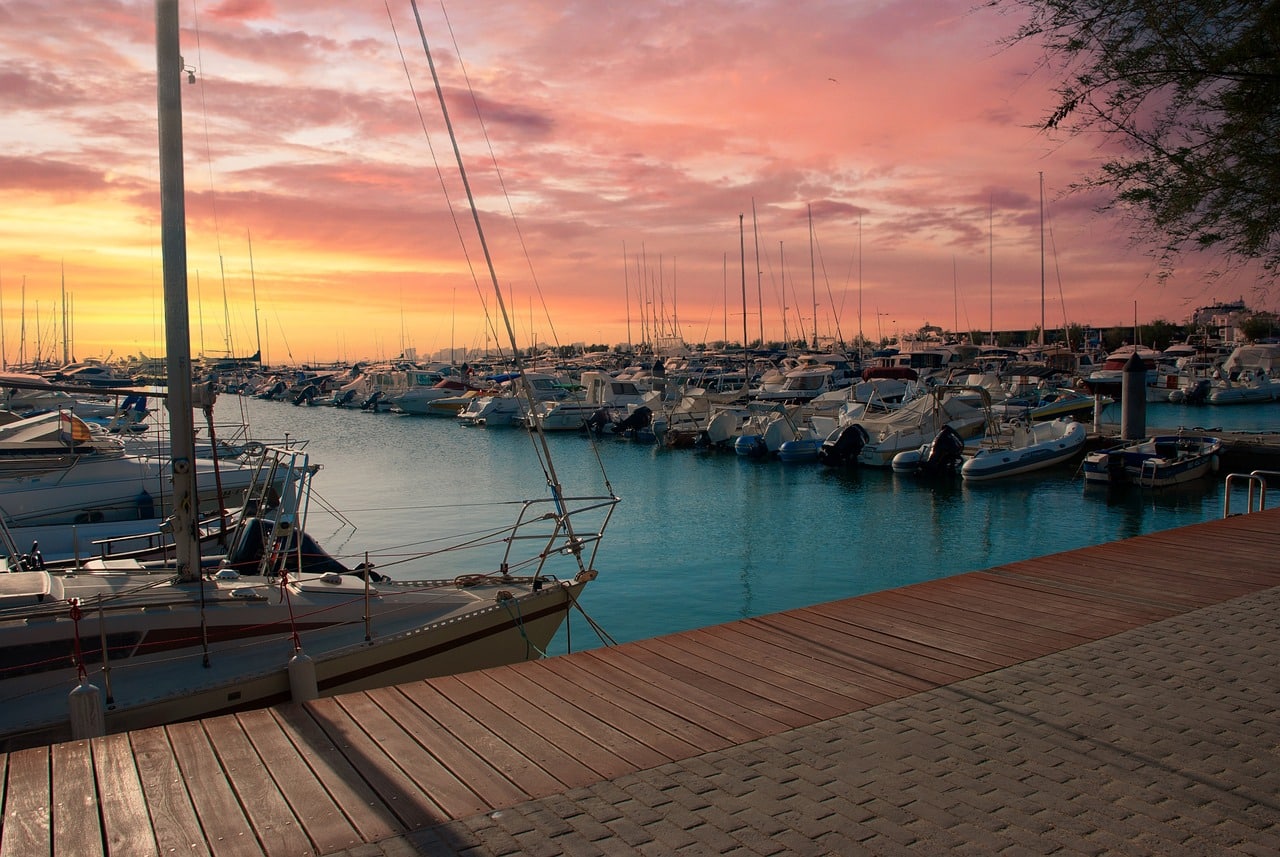Table of Contents
Have you ever wondered if your marina is operating at its full potential? If you’re struggling with overbooked slips one month and empty docks the next, you may have to start re-planning your processes to make your operations more efficient. A lot of marina managers face the same kinds of problems: inefficient use of space, unpredictable cash flow, and a hard time planning for growth.
In this blog, you’ll learn exactly how to calculate your marina occupancy rate and why it’s crucial for maximizing your operations.
By the end, you’ll have a clear, step-by-step guide that empowers you to make data-driven decisions, optimize your dock utilization, and ultimately boost your bottom line. Let’s dive in and solve these common pain points together!

1. Understanding Your Target Market
It’s important that you start by understanding what kind of customers you have, and what do they expect before you even begin calculating occupancy. Knowing your market lays the foundation for accurate occupancy tracking and strategic planning.
Identifying Your Ideal Customer:
- Demographics: Demographics means understanding the basic characteristics of your customers (such as age, income level, and lifestyle) and it helps in shaping your inventory.
Example: Are they families looking for leisurely days on the water, competitive anglers seeking high-performance fishing boats, or luxury yacht enthusiasts wanting premium features?
- Preferences: All the specific needs and desires every customer has when purchasing a boat.
Example: Do they prioritize fuel efficiency to reduce operating costs, advanced navigation technology for a smoother ride, spacious decks for entertainment, or eco-friendly features like electric or hybrid boats?
- Buying Behavior: It’s important to know your customers’ purchasing habits, because this will allow you to stock the right boats at the right price points.
For Example: Do they want to invest in high-end models with top-tier amenities, or would they be more interested in budget-friendly options that provide value while saving some money?
How to Conduct Market Research:
-
Customer Surveys: Ask your current customers about their boating needs.
-
Social Media Polls: Use platforms like Facebook or Instagram to gather quick feedback.
-
Competitive Analysis: Visit nearby marinas and boatyards to see what boats and services are popular.
By taking the time to understand your target market, you can fine-tune your inventory to meet real demand, ensuring your occupancy rates accurately reflect a thriving, well-utilized marina.
2. Why Marina Occupancy Rates Matter
Marina occupancy rates are one of the most important metrics because they reveal the health of your operation. Knowing your occupancy rate will help you address the strengths and weaknesses in your business, allowing you to plan better and optimize resources.
Why Are Occupancy Rates So Important, Key Reasons:
-
Revenue Forecasting: A high occupancy rate usually means better revenue. If your docks are full, you’re probably getting the maximum income from slip rentals.
-
Resource Allocation: Understanding how many slips are being occupied helps you manage maintenance schedules, staff assignments, and customer service.
-
Operational Efficiency: Monitoring occupancy will help you in spotting trends. For example, are there certain times of the year when your occupancy dips? This information can help you plan some promotions for lazy times.
-
Customer Satisfaction: If customers are happy, and are getting consistently the services they expect, they’re more likely to renew contracts and recommend your marina to others.
Pain Points Addressed:
-
Empty Docks or Overbooking: Without tracking, you might face periods of underuse or overcrowding, and both can hurt revenue and customer satisfaction.
-
Inefficient Planning: Is nearly impossible to make informed decisions about staffing and maintenance without solid occupancy data, that’s why is so important to track your occupancy rates.
You can adjust your operations and marketing strategies to guarantee a constant, profitable flow of money throughout the year just by keeping records on your occupancy rates.

3. Key Terms and Metrics in Marina Management
Before you start calculating your occupancy rate, it’s important to understand the key terms and metrics that define it. Knowing this basic information will make the process easier and help you share your findings with your team more effectively.
Essential Terms to Know:
-
Total Available Slips: The complete number of boat slips or berths in your marina. This number serves as the denominator in your occupancy rate calculation.
-
Occupied Slips: The number of slips currently in use. This is your numerator.
-
Occupancy Rate: The percentage that represents how full your marina is.
-
Turnover Rate: How often the same slip is rented during a certain time period, it shows the demand and helps with planning maintenance schedules.
Other Important Metrics:
-
Average Occupancy Duration: How long a boat stays in a slip. It can help predict future revenue and plan for future capacity.
-
Seasonal Fluctuations: Variations in occupancy based on the time of year. For example, marinas in warmer climates may have high occupancy rates all year round, while others might only be busy during the summer.
The Importance of These Metrics:
-
They help you understand the overall efficiency of your marina.
-
They will help you make decisions for pricing strategies, maintenance scheduling, and marketing initiatives.
-
They provide a benchmark for measuring success and help identify areas for improvement.
Using these terms and metrics correctly will set the stage for accurate and insightful occupancy calculations, and this will eventually lead to better operational decisions and finally, a more successful marina.
4. Step-by-Step Guide to Calculating Marina Occupancy Rates
Calculating your marina’s occupancy rate is way simpler than it sounds. Here’s a quick, step-by-step process that will help you understand how full your marina is:
A. Determine Total Capacity
-
Count all available boat slips or docks in your marina. This is your total capacity.
-
Tip: Don’t forget to include seasonal or temporary slips that might open during peak times.
B. Count the Occupied Slips
- Record the number of slips that are currently occupied by boats. You can use digital tracking tools or simple headcounts to get an accurate number.
C. Calculate the Occupancy Rate
-
Use this simple formula: Occupancy Rate (%) = (Number of Occupied Slips / Total Available Slips) × 100
-
Example: If you have 80 occupied slips out of 100, your occupancy rate is 80%.
D. Analyze Your Results
-
A high occupancy rate might show strong demand, and it may also signal the need for expansion.
-
A low occupancy rate may reveal opportunities to increase marketing efforts or adjust the prices of your services.
5. Best Practices for Managing and Improving Occupancy Rates

Once you know your occupancy rate, you can start working on improving it. Let’s look at some best practices:
A. Regular Monitoring:
Keep track of your marina’s occupancy rate at different intervals because they can present valuable data into trends, customer behavior, and planning in short and long terms.
-
Daily Monitoring: Will identify peak hours and times when boats are coming and going the most. This can help optimize dock assignments, staffing, and short-term rental availability.
-
Weekly Monitoring: Gives the marina the opportunity to see fluctuations in occupancy, allowing you to adjust pricing, promotions, or dock space allocations accordingly.
-
Monthly Monitoring: Reveals different trends by seasons and helps plan inventory, maintenance schedules, and resource allocation based on demand.
-
Yearly Monitoring: Highlights long-term patterns, such as peak boating seasons and off-season and low demand times. This information is crucial for planning the annual pricing strategies, marketing campaigns, and investment decisions.
By using digital dashboards like those in DockMaster, you can track real-time occupancy data at each of these levels, ensuring that every decision is backed by accurate insights.
B. Benchmarking:
-
Compare your current occupancy with industry averages, competitors or your own marina’s past performance.
-
Identify seasonal trends to predict when to ramp up marketing or adjust pricing.
C. Customer Engagement:
-
Gather feedback from your marina customers to see if there are opportunities to make your service even better.
-
Use that information to improve your services, which in turn can increase occupancy.
D. Optimize Resource Allocation:
-
Ensure that all your resources, like your staff and maintenance, are aligned with your occupancy patterns.
-
Adjust staffing and maintenance schedules during peak and off-peak times.
E. Promotions and Incentives:
- Offer early-bird discounts, loyalty programs, or seasonal promotions to attract more customers during slow periods.
6. Leveraging Technology: How DockMaster Helps
Did you know that even a 5% increase in occupancy can significantly boost your marina’s revenue? The key to maximizing dock space lies in working with real-time data instead of just trying in different ways. With DockMaster’s integrated marina management system, tracking occupancy is effortless. Instantly see which slips are available, monitor peak usage times, and adjust your strategy on the fly. Are you making the most of your marina’s capacity? Let DockMaster help you optimize every inch of your waterfront.
A. Real-Time Tracking:
-
DockMaster automatically updates slip occupancy, giving you a clear snapshot of your marina’s performance.
-
This means you can see trends as they are happening and adjust your operations accordingly.
B. Automated Reporting:
-
With DockMaster, it’s easy to generate detailed reports on occupancy rates, historical trends, and peak periods.
-
These reports help you plan your demand and plan for seasonal changes without the excess work of manual calculations.
C. User-Friendly Dashboards:
-
The platform’s intuitive interface makes it easy for any marina manager to access important metrics when needed.
-
Customize your dashboard to highlight key data, such as daily occupancy rates and changes over time.
D. Integration with Other Modules:
-
DockMaster doesn’t work in isolation. Its system integrates with billing, service, and customer management modules, ensuring a holistic view of your marina.
-
This integration helps you enhance your operations, reduce manual errors, and improve efficiency.
By using these technological tools, you can stop depending on guesswork and focus on making smart decisions that drive your marina’s success. DockMaster’s solutions simplify the entire process, from tracking to reporting, so you can get the most out of every dock in your marina.
Key Takeaways: Maximizing Your Marina’s Potential
Managing your marina is about making data-driven decisions with the right information, driving revenue and improving customer satisfaction. Here’s how to stay ahead:
Track Regularly - Keeping a consistent eye on your occupancy rate helps you spot trends early.
-
Daily checks can show you the peak check-in and check-out times, helping you optimize staff scheduling.
-
Monthly reviews – highlight seasonal demand shifts so you can prepare accordingly.
-
Yearly comparisons help identify long-term growth opportunities and find out which infrastructure investments are needed.
Plan for the Future - Use occupancy data to predict future demand and make smart investments.
-
If you notice growing demand for larger slips, it may be time to expand.
-
Are off-season rates too low? Adjust pricing based on data to keep profitability.
Engage Customers - Your customers’ needs are constantly evolving.
-
Survey boaters to find out what amenities or services they’d like to see.
-
Keep your marina attractive with special promotions, loyalty programs, and community events.
Leverage Technology - Advanced marina management software like DockMaster takes the guesswork out of tracking occupancy.
-
Real-time tracking ensures no slip goes unused.
-
Automated reports help you analyze trends and adjust operations with confidence.
Optimize Operations - Small changes can lead to big savings and higher revenue.
-
Use data to schedule maintenance during quieter times.
-
Adjust staffing to match high-traffic periods, improving efficiency without overextending resources.
-
Offer targeted promotions when occupancy is low to attract more boaters and keep your marina full all year long.
According to the 2022 Marina Investment report by the Leisure Investment Properties Group, marina occupancies are at an all-time high across the country, leading to immediate profit growth from increased storage rates.
You can ensure your marina operates at peak efficiency year-round by consistently tracking occupancy rates, planning ahead, engaging customers, and leveraging technology like DockMaster.
FAQs
Q: What is the formula for calculating marina occupancy rates? A: It’s super simple: Occupancy Rate (%) = (Number of Occupied Slips / Total Available Slips) × 100.
Q: How often should I check my occupancy rate? A: Regular monitoring of your marina’s occupancy rate is essential for effective management. Daily checks can help you identify peak usage times, allowing for efficient resource allocation and immediate response to fluctuations. Weekly reviews provide insights into short-term trends, enabling timely adjustments to operations. Monthly and seasonal analyses offer a broader perspective, helping you understand patterns over time and plan for future demand.
Q: What tools can help manage marina occupancy? A: marine management software like DockMaster offers real-time tracking, default reporting, and customizable dashboards for easy occupancy monitoring.
Q: How do occupancy rates affect my business? A: They help you understand demand, optimize resource allocation, plan for expansion, and improve overall efficiency, impacting profitability in a direct way.
Q: Can DockMaster forecast future occupancy trends? A: Yes, DockMaster’s analytics and reporting tools can forecast trends based on historical data, helping you plan ahead and adjust your strategy.
